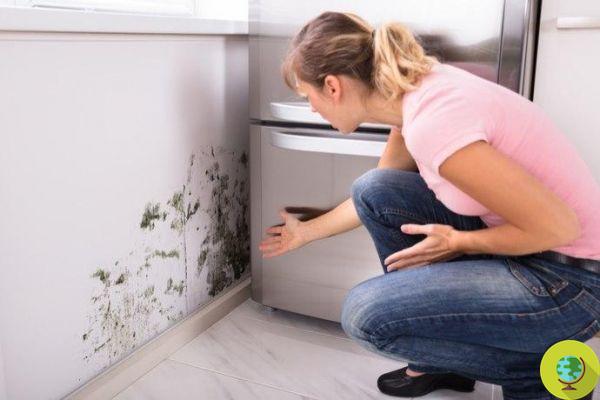
The presence of mold is a rather frequent reality inside our homes. Although it is often underestimated, the proliferation of mold must be addressed promptly, to avoid any damage to health related to the inhalation of the spores.
Don't store avocado like this: it's dangerous
The presence of mold is a rather frequent reality inside our homes.
Although it is often underestimated, the proliferation of mold must be addressed promptly, to avoid any damage to health related to the inhalation of the spores.
For this reason, in addition to knowing which are the best remedies to remove mold, it is important to know how it forms and how to prevent it from reforming.
Index
What is mold and what effects does it have on our health?
Mold is a general term that refers to a living microorganism that encloses various types of microscopic fungi. These fungi, which proliferate exclusively in a humid environment, are very useful in nature, in fact, they break down plants and contribute to forming humus.
Basically, it is an agglomeration of thin mycelia that reproduce by means of spores, capable of covering the damp surfaces of walls and ceilings. It is precisely the hyphae that grow from the spores, which can cause particularly dangerous respiratory problems in people who already suffer from immune failure or asthma.
Furthermore, mold spores that are released indoors can create allergy problems and those of some particular species, such as the Stachybotrys fungus, release toxins that can cause lung inflammation, particularly dangerous for the elderly and children. In fact, in children, about 13% of chronic asthma is associated with excessive humidity in homes.
Mucous membranes are usually particularly affected due to their lack of a protective layer; however, mold can also attack the epidermis, causing eczema and atopic dermatitis.
In damp apartments there are also non-specific irritations of the mucous membranes of the eyes, nose, throat, as well as of the skin, which do not have an allergic origin. If these irritative states persist, inflammatory processes can develop in the upper respiratory tract (sinusitis), as well as in the lower ones (chronic bronchitis or asthma).
The World Health Organization (WHO) confirms that humidity and mold in the home can cause serious damage to health, and argues that prevention is a great way to combat their formation.
Where does mold form in the house?
In the first and second place among the most affected environments, we find the bathroom and the kitchen; the bedrooms are no less affected, however, because they are often cooler, north-facing and because during the night a considerable and prolonged humidity is emitted through the breathing and sweating of the occupants.
As for the exposure of the environments, the rooms of the house that are exposed to the west and north-west, which are colder and more exposed to rain, tend to be more affected by mold than other areas.
What are the main causes of mold?
The main causes that contribute to the formation of mold in our homes are basically two:
- A non-optimal insulation of the room.
This occurs especially when the house is located on the ground floor, above cold cellars and without openings. - Excessive humidity in the environment, which should not exceed 55%.
Already at slightly higher levels, condensation could form on ceilings, walls and glass, with the consequent development, in a short time, of mold, bacteria and greyish spots.
What can be done to prevent new mold stains from forming?
Eliminating mold stains is not enough to prevent their future formation. On the other hand, it is essential to adopt some simple precautions:
- We air the house several times a day, for at least five minutes.
The external air, usually cooler and drier, allows to balance the internal humidity; - When we paint the walls, we use transpiring water-based paints, especially in the bathroom and kitchen, which, due to the presence of running water, are the most humid rooms in the house. The ideal would be to add a specific anti-mold additive to the specific paint;
Another valid remedy to avoid the re-formation of mold stains is to make the insulation of our home more effective.
A first step in this sense could be to replace the windows of our light points; in the case of very humid environments it could also be useful to insulate the walls with a thermal coat, in order to avoid the formation of humidity at the structural level.


























